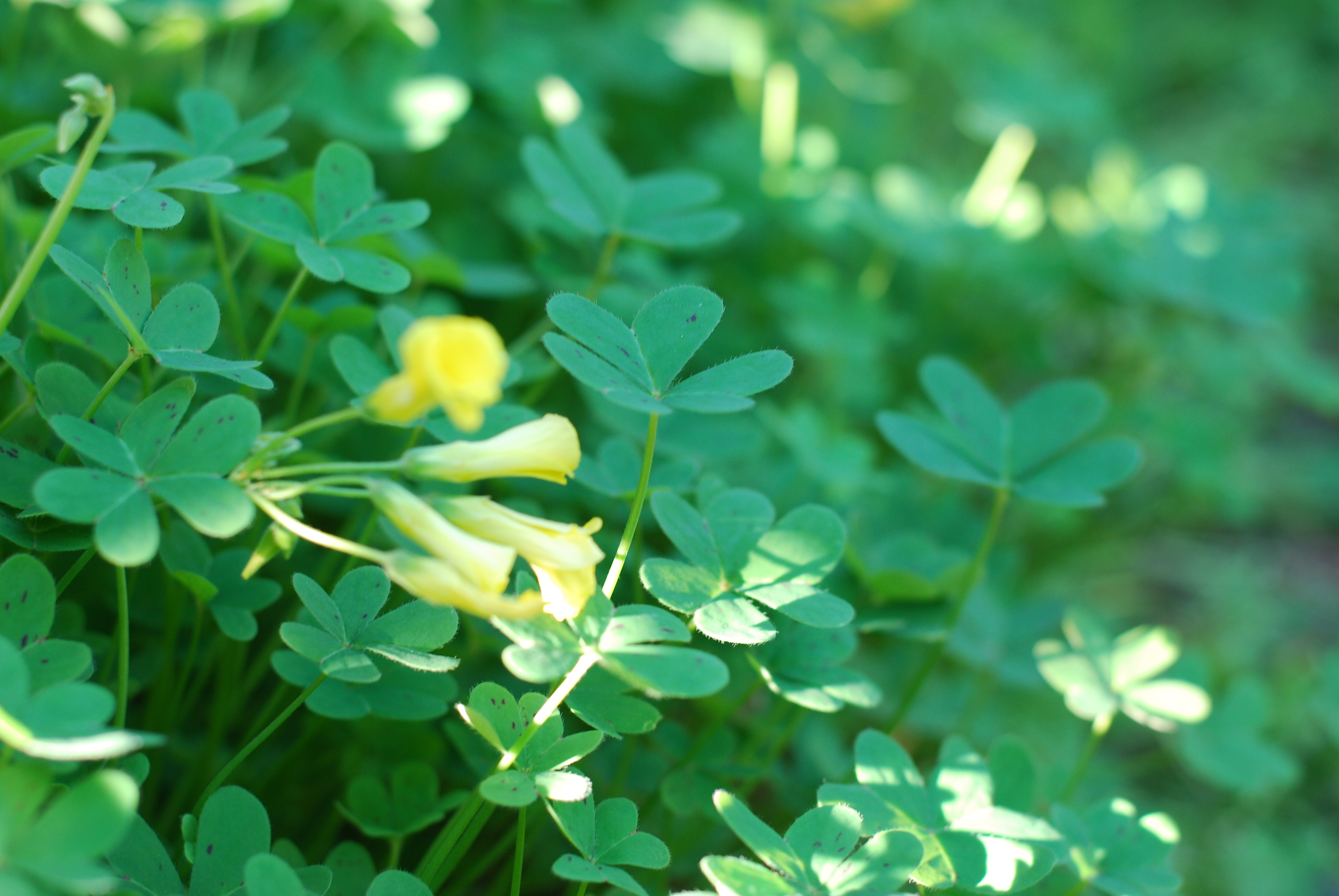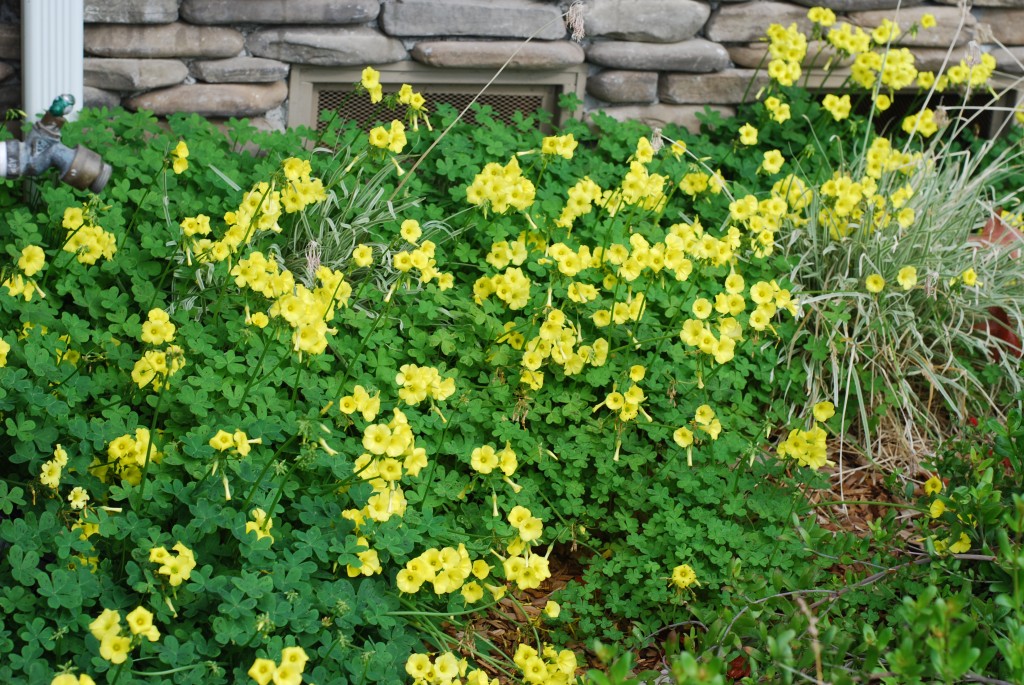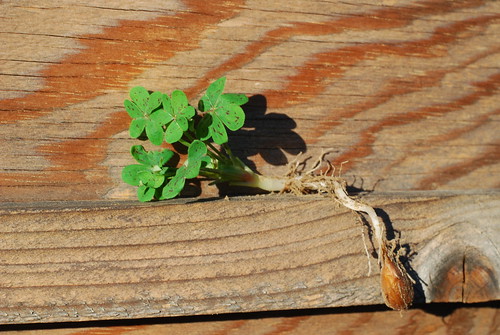 It looks like clover and has pretty yellow flowers, but it is a noxious weed called Oxalis, and it could be in your yard right now. This South African bulb can be a terrible pest because it is perfectly adapted to our Mediterranean climate, appearing with our moist warm winters and going completely dormant in the dry summer. The secret to ridding yourself of Oxalis pes-caprae is knowing the life cycle, timing, and persistence!
It looks like clover and has pretty yellow flowers, but it is a noxious weed called Oxalis, and it could be in your yard right now. This South African bulb can be a terrible pest because it is perfectly adapted to our Mediterranean climate, appearing with our moist warm winters and going completely dormant in the dry summer. The secret to ridding yourself of Oxalis pes-caprae is knowing the life cycle, timing, and persistence!
Getting Rid of Oxalis
The best way to get rid of oxalis is exhaust the bulb. The underground bulbs are the storage organ to make it through our long dry summer. As soon as the rains commence, up come cute little clover-like leaves. This is depleting the bulbs and this is the time when you should start pulling the leaves off. The bulb is exhausted every time it has to send up new shoots and leaves, so even if the oxalis continues to grow back when you pull it, rest assured that it will weaken with every time, and eventually will dwindle out. Keep doing this until you see flowers forming. Once you see flowers, the new bulblets are also forming and pulling up plants then will disperse the new bulbs, a poor idea. Thick sheet mulch will not kill/smother Oxalis, but it definitely makes the plant work harder to reach the surface (further depleting the bulbs) and easier to pull. Keep it up! You can outwit this plant as long as you pay attention. Most people find that they can completely obliterate even a bad case of Oxalis within 3 years.
If you have a lot of Oxalis, the problem will take a bit more strategy and work. Chemicals do not work on oxalis because they will treat the top of the plant without dealing with the real culprit: the bulb! Instead you can use methods like solarization, where the heat of the sun is used to kill the bulbs, or sheet mulching with cardboard and mulch which will make the industrious bulbs work harder to produce their plants1.
Preventing the Problem

Oxalis is drawn to compact and clay soils, which are very common in our area. Long term ways to prevent Oxalis is to improve your soil so that they are less friendly to the weed. This would include adding organic, nitrogen-rich matter to your soil, and to improve drainage with good mulching.
One other interesting note: Chickens eat Oxalis and because they are on the job constantly looking for food, they are more persistent than you are! Deva’s chickens have completely eradicated it in her orchard, where they roam freely.
Good luck in the coming season,
The Natural Front Yards Team
1Earthcare Landscaping is in the practice of using solarization and sheet mulching, and can use them to help Oxalis-ridden yards. However, because it is almost impossible to fully eradicate the weed, yards that already have strong Oxalis problems do not qualify for the Natural Front Yards program.
For more information, go to http://ccmg.ucdavis.edu/files/83817.pdf

